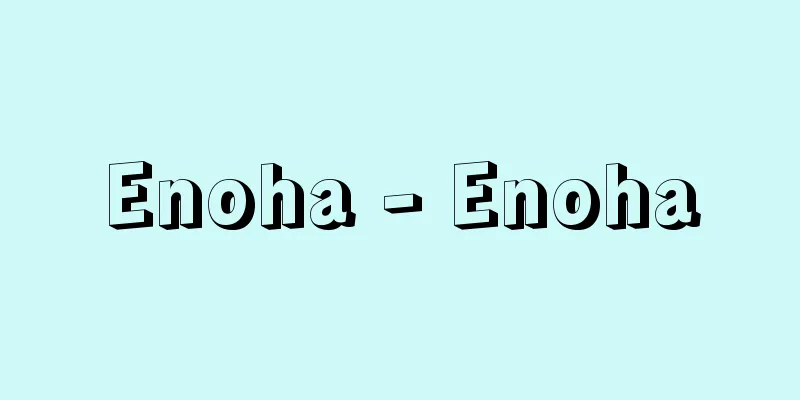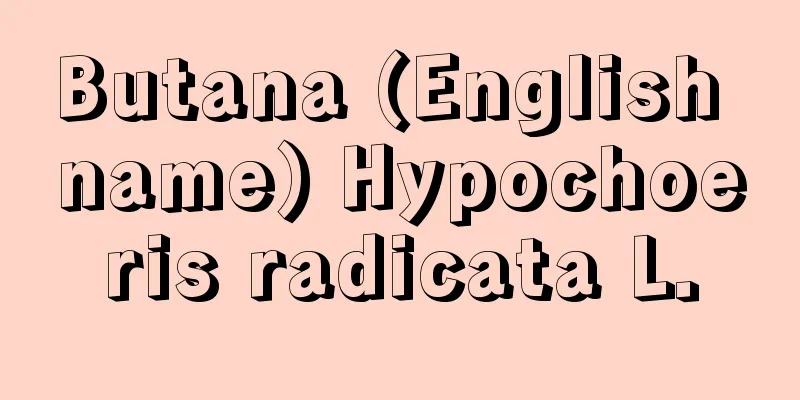Umbrella - Umbrella

|
A type of headgear. It is generally made into a low cone shape and is worn with a string attached. It is also called a "kaburi gasa" to distinguish it from a "sashi-umbrella." At first, hats were mainly used as rain gear, but later they were used to hide the face when going out, and then they came to be widely used by both men and women for protection from the rain and sun when working outdoors. The history of the hat is long, first seen in the oldest Chinese poetry collection, the Book of Songs, and has since been widely used in Southeast Asia. In Japan, it was also seen in the Nihon Shoki, and is often depicted on Haniwa clay figurines. In the Heian period, ayai hats with a protrusion called koji on the top were used by samurai traveling, yabusame (horseback archery) and dengaku (horse dance) priests, and ichime hats became popular for women to wear when going out. Then, in the Kamakura and Muromachi periods, the winds of dew began to blow, and men began to wear ichime hats and suge hats when going out, but ichime hats continued to be worn by women. In the Edo period, hats became more and more popular among both men and women, and various types were used, but after the Meiji period, as various types of hats became more popular, they were not used much. Materials used for making hats include rush grass and rice straw stalks, shavings of bamboo, cypress, pine and cedar, sedge and wheat straw stalks, bamboo bark, Chinese fan palm leaves, cotton cloth, Japanese paper, animal hides, etc. Hats made from these materials are classified into six types according to their structure: woven hats, braided hats, sewn hats, pressed hats, stretched hats, and painted hats, which are made by adding secondary processing such as oil, tannins and lacquer to the above hats. (1) Amigasa is made by weaving the stalks of rush grass or rice straw into a cone, truncated cone, hat, cylinder, funnel, or bifold shape. It is generally called amigasa or igasa, and is easy to put on and is often tied with string. Representative types of amigasa include the Aya-igasa from the Heian period, and the Kumagai-gasa, Tofu-no-amigasa, Meseki-gasa, Fuka-amagasa, Shinobi-gasa, Ichimonji-gasa, Fuji-oroshi-gasa, Tengai-gasa (Komuso-gasa), and Rokubu-gasa from the Edo period. They are widely distributed throughout Japan as sun hats and have been worn by both men and women since ancient times. Women in particular used them to protect themselves from the sun while farming, peddling, or pulling nets, while men wore them on special occasions such as funerals, festivals, and Bon Odori festivals. (2) Kumigasa is made by assembling pieces of shaved bamboo or cypress into disks, semicircular spheres, or cones. There are two types of weave: Hiragumi and Ajirogumi, and they are generally called Hinokigasa or Ajirogasa. Small ones have a daiwa, and large ones have a pillow or earrings as a hat protector. In the Edo period, many of the hats called Ajirogasa, Ayagasa, and Kishagasa were made of bamboo. In the past, they were worn by ascetic monks in Omine, Yamato, but they are now mainly found in agricultural and mountain villages in the Kinki and Chubu regions. They are lightweight and provide protection from the sun and rain, and were mainly worn by men for outdoor work. (3) Sewn hats are made from sedge or straw by sewing together shapes such as disks, cones, truncated cones, hats, semicircular spheres, tsumaori hats, and bellflower hats. They are generally called sugegasa, and the Ichimegasa and bellflower hats of the Heian period, the Denchu, Sandogasa, Tsumaori hats, Zanzara hats, Kaga hats, Sugegasa, and Hiragasa of the Edo period, etc., were all made of sedge sewn hats. They were distributed throughout most of the country, and were widely worn by both men and women as rain hats. (4) Oshigasa is made by placing bamboo skin or palm leaves over a bamboo frame and pressing them into a cone, hat, semicircular, folded or bellflower shape. Generally, bamboo skin hats are called Takenokogasa or Bacchogasa, and palm leaves are called Kobagasa or Birogasa. Examples of Oshigasa from the Edo period include Takenokogasa, Hachikugasa, Rojigasa, Tonbogasa, Kagoyagasa and Satsumagasa. They were found in western Japan from Kinki to the west and were worn in all weather conditions. (5) Harikasa are made by stretching cloth, paper, leather, etc. over a bamboo frame into a cone, semicircular, folded, or bellflower shape. Examples include the jinbaori (camp hat) of the Edo period and the manju (steamed dumpling) hat used by rickshaw drivers and postmen in the Meiji and Taisho periods. (6) Nuri hats are made by applying oil, tannins, or lacquer, and in the Edo period there were Nuri hats, Tsuzura hats, Jingasa hats, Nirayama hats, etc. Nowadays, they are rarely worn. Also, since ancient times, the hat has not simply been used as headgear, but has also been treated as a sacred item of talisman (jugu) in festivals, and has also played an important role in performing arts and oral literature. For example, it was believed that gods who visit from foreign lands hide their faces wearing straw raincoats and hats, and when they appear, the gods remove their hats and hang them on a tree, which became the legend of the Kasakake Matsu. There are also other old tales such as "Kakure Mino Kasa" (Hidden Mino Kasa) that show the magical properties of hats, such as the Hidden Hat and Flying Hat. [Mizuo Miyamoto] "Headwear, Kimono, and Footwear" by Miyamoto Kataro (Folklore Folk Crafts Series 24, 1968, Iwasaki Bijutsusha) " ▽ "Japanese Folk Tools" by Nakamura Takao (1981, Kobundo) [Reference] | | |© Yoshiyasu Tanaka Straw hat © Yoshiyasu Tanaka Braided hat © Yoshiyasu Tanaka Hat © Yoshiyasu Tanaka Hat © Yoshiyasu Tanaka Paper hat and lacquered hat Source: Shogakukan Encyclopedia Nipponica About Encyclopedia Nipponica Information | Legend |
|
被(かぶ)り物の一種。一般に低円錐(えんすい)形につくり、これに紐(ひも)などをつけてかぶる。差し傘と区別して、「かぶりがさ」ともいう。初め笠はおもに雨具として用いられたが、のち外出の際に顔面を隠すために使われ、ついで広く屋外の労働に、雨除(よ)け・日除けとして男女ともに用いられた。 笠の歴史は古く、中国最古の詩集『詩経』に初見され、それ以後今日まで広く東南アジア各地で使用されている。日本でも早く『日本書紀』にみえ、埴輪(はにわ)にも多く造形されている。平安時代には、頂部に巾子(こじ)とよぶ突起のある綾藺(あやい)笠が、武士の旅行・流鏑馬(やぶさめ)や田楽(でんがく)法師に用いられ、また女子の外出用には広く市女(いちめ)笠が愛用されるようになった。やがて鎌倉・室町時代に入ると、露頂(ろちょう)の風がおこり、男子も外出に藺笠・菅(すげ)笠など笠を着用することが多くなり、女子の間では相変わらず市女笠が用いられていた。江戸時代になると、笠はますます男女の間に広く行われ、各種のものが用いられたが、明治以後は、種々の帽子が普及したため、あまり用いられなくなった。 笠の材料としては、イグサ・稲藁(いねわら)の茎、タケ・ヒノキ・マツ・スギの削り片(きれ)、スゲ・麦藁の茎、竹皮、ビロウの葉、綿布、和紙、獣皮などが使われた。これらの材料でつくられた笠は、その組織により、編(あみ)笠、組(くみ)笠、縫(ぬい)笠、押(おさえ)笠、張(はり)笠、およびこれらの笠に油・渋・漆など二次的加工を加えた塗(ぬり)笠の6種に分類される。 (1)編笠は、イグサ・稲藁などの茎で、円錐形、円錐台形、帽子形、円筒形、漏斗(ろうと)形、二つ折り形に編んでつくる。一般にアミガサ、イガサの名でよばれ、着用装置も簡単で、紐で行われることが多い。平安時代の綾藺笠、江戸時代の熊谷(くまがい)笠・十符編笠(とふのあみがさ)・目狭(めせき)笠・深(ふか)編笠・忍(しのび)笠・一文字(いちもんじ)・富士颪(おろし)・天蓋(てんがい)(虚無僧(こむそう)笠)・六部(ろくぶ)笠などは、代表的な編笠である。日笠として広く日本全土に分布し、古くから男女に着用され、とくに女性は農耕・行商・網曳(あみひ)きなどの日除け用として、男性は葬送・祭礼・盆踊りなど特殊な場合に着用した。 (2)組笠は、タケ・ヒノキなどの削り片で、円盤形、半円球形、円錐形に組んでつくる。その組織には平(ひら)組みと網代(あじろ)組みとがあり、一般にヒノキガサ、アジロガサの名でよばれ、その着用装置には、小型のものは台輪、大型のものには枕(まくら)・耳輪などの笠当(かさあて)をつけた。江戸時代に網代(あじろ)笠・綾笠・騎射(きしゃ)笠などとよばれたものは多くタケの組笠であった。古く大和(やまと)大峰(おおみね)の修験者(しゅげんじゃ)が着用したが、その分布は近畿・中部の農山村が中心で、日除けとして軽快であるうえに雨除けにも用いられ、主として男子の屋外作業用に着用された。 (3)縫笠は、スゲ・麦藁などで、円盤形、円錐形、円錐台形、帽子形、半円球形、褄折(つまおり)形、桔梗(ききょう)形に縫いつづってつくる。一般にスゲガサの名でよばれ、平安時代の市女笠・桔梗笠、江戸時代の殿中(でんちゅう)・三度笠・褄折笠・ざんざら笠・加賀笠・菅笠・平笠などは、いずれもスゲの縫笠であった。その分布はほとんど全国的で、雨笠として広く男女に着用された。 (4)押笠は、竹皮・ビロウの葉などをタケの骨組みの上からかぶせ、円錐形、帽子形、半円球形、褄折形、桔梗形に押さえ止めてつくる。一般に竹皮笠はタケノコガサ、バッチョーガサ、蒲葵(びろう)笠はコバガサ、ビロウガサの名でよばれ、江戸時代の竹子(たけのこ)笠・はちく笠・路地(ろじ)笠・蜻蛉(とんぼ)笠・駕籠屋(かごや)笠・薩摩(さつま)笠などがそれである。その分布は近畿以西の西日本で、晴雨兼用として着用されていた。 (5)張笠は、布・紙・皮などをタケの骨組みの上に、円錐形、半円球形、褄折形、桔梗形に張ってつくる。江戸時代の陣笠や、明治・大正時代に人力車夫・郵便配達夫などの使用した饅頭(まんじゅう)笠などがある。 (6)塗笠は、油・渋・漆などを塗ったもので、江戸時代に塗笠・葛籠(つづら)笠・陣笠・韮山(にらやま)笠などがあった。現在ではほとんど着装されることがなくなった。 また、笠は古くから、単なる被り物としてではなく、祭礼における神聖な呪具(じゅぐ)としても扱われ、芸能や口承文芸においても重要な役割を果たしている。たとえば、異郷から訪れる神は簑笠(みのかさ)姿で顔を隠していると考えられ、その示現した神霊が、笠を外して木に掛けたのが笠掛け松の伝説となり、ほかに「隠れ簑笠」などの昔話にも隠れ笠や飛び笠など笠の呪術性を示す話がある。 [宮本瑞夫] 『宮本馨太郎著『かぶりもの きもの はきもの』(『民俗民芸双書24』1968・岩崎美術社)』▽『中村たかを著『日本の民具』(1981・弘文堂)』 [参照項目] | | |©田中淑安"> 編笠 ©田中淑安"> 組笠 ©田中淑安"> 縫笠 ©田中淑安"> 押笠 ©田中淑安"> 張笠と塗笠 出典 小学館 日本大百科全書(ニッポニカ)日本大百科全書(ニッポニカ)について 情報 | 凡例 |
Recommend
Pyruvic acid - pyruvic acid
A type of keto acid. It was formerly called pyruv...
Schnitger, Arp
Born: July 9, 1648 in Schmalenfleth near Oldenburg...
Hulun Buir League (English spelling)
A league in the northeastern part of the Inner Mon...
Kiyomizu-dera Temple
Also called "Seisui-ji." A Northern Hoss...
Palmyra palm
A large palm plant that is usually cultivated and ...
Kiesinger, KG - Kiesinger
...there were three patterns: (1) a coalition pat...
Miobatrachus
...Some species, such as the upside-down frog Pse...
Keratin - German
A scleroprotein, a general term for structural pr...
Epic Theater
A theory of drama proposed by E. Piscator and cont...
Tiliaceae
…It is a good quality nectar source. The Tiliacea...
Organ system
…Normally, multiple or multiple types of organs a...
Perspective - Enkinho (English spelling) perspective
A method of pictorially expressing three-dimensio...
Heda, WC (English spelling) HedaWC
...Furthermore, the cutthroat free competition to...
Dicke
…In 1888, SJ Gee of England and TEHTaysen of Engl...
Eskimo-type kinship names - Eskimo-type kinship names
...That is, (1) Hawaiian-style kinship nomenclatu...









